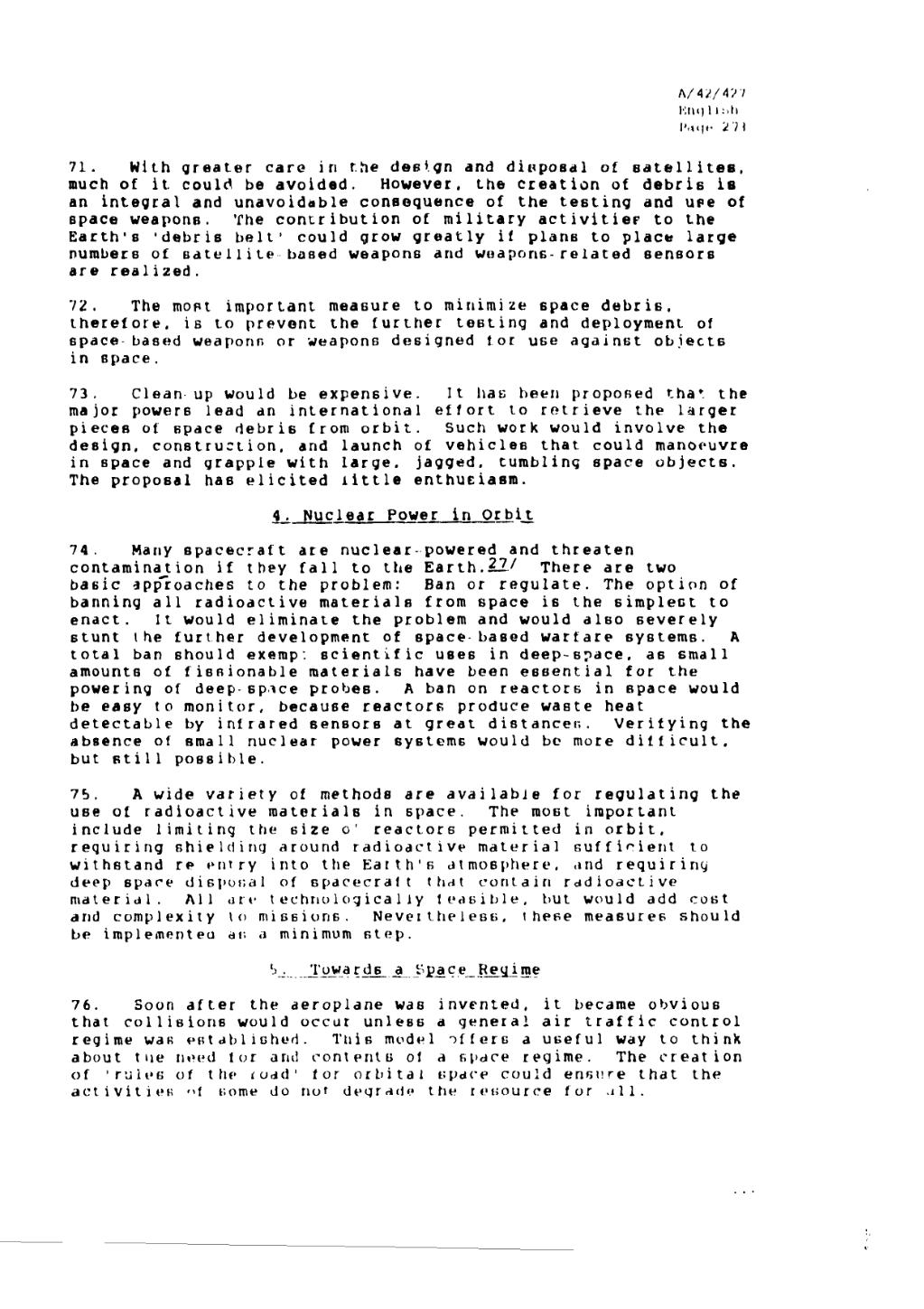A/42/427
English
Page 273
71. With greater care in the design and disposal of satellites, much of it could be avoided. However, the creation of debris
an integral and unavoidable consequence of the testing and use of space weapons. The contribution of military activities to the Earth's 'debris belt' could grow greatly if plans to place large numbers of satellite-based weapons and weapons-related sensors are realized.
72. The most important measure to minimize space debris, therefore, is to prevent the further testing and deployment space-based weapons or weapons designed for use against objects in space.
73. Clean up would be expensive. It has been proposed that the major powers lead an international effort to retrieve the larger pieces of space debris from orbit. Such work would involve the design, construction, and launch of vehicles that could manoeuvre in space and grapple with large, jagged, tumbling space The proposal has elicited little enthusiasm.
4. Nuclear Power in Orbit
74. Many spacecraft are nuclear-powered and threaten contamination if they fall to the Earth.[1] There are two basic approaches to the problem: Ban or regulate. The option of banning all radioactive materials from space is the simplest to enact. It would eliminate the problem and would also severely stunt he further development of space-based warfare systems. A total ban should exempt scientific uses in deep-sace. as small amounts of fissionable materials have been essential for the powering of deep-space probes. A ban on reactors in space would be easy to monitor, because reactor produce waste heat detectable by infrared sensors at great distance. Verifying the absence of small nuclear power systems would be more difficult, but still possible.
75. A wide variety of methods are available for regulating the use of radioactive materials in space. The most important include limiting the size of reactors permitted in orbit, requiring shielding around radioactive material sufficient to withstand re-entry into the Earth's atmosphere, and requiring deep space disposal of spacecraft that contain radioactive material. All are technologically feasible but would add cost and complexity to missions. Nevertheless, these measures should be implemented at a minimum step.
5. Towards a Space Regime
76. Soon after the aeroplane was invented, it became obvious that collisions would occur unless a general air traffic control
regime was established. This model offers a useful way to think about the need for and contents of a space regime. The creation of 'rules of the road' for orbital space could ensure that the activities of some do not degrade the resource for all.
/…
- ↑ The United States has launched 23 spacecraft that relied at least in part upon nuclear power sources: one source was a reactor; the rest were radioactive materials the decay heat of which is converted into electricity (thermoelectric generators). By the end of 1986 the Soviet Union had launched 31 nuclear-powered spacecraft, almost all of which contained fission reactors, and it currently operates all of the reactor-powered satellites.
